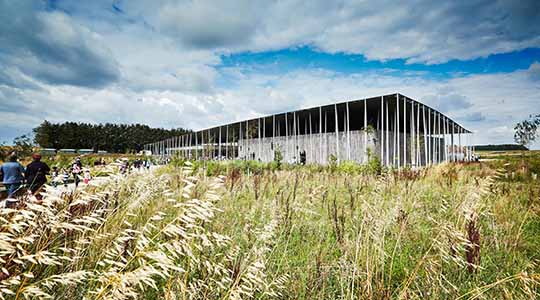
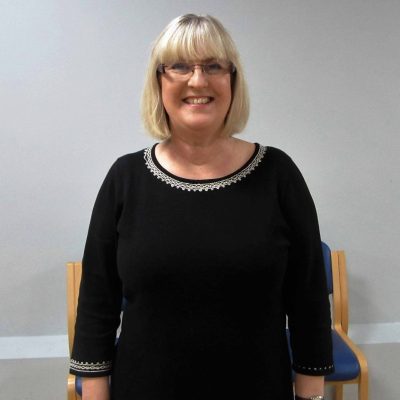
Dr. Amanda Chadburn, Historic England.
Two years ago English Heritage split into two parts and created the new Historic England – the government statutory agency. Dr. Chadburn was the lead advisor on Stonehenge and Avebury from 1992-2012; Stonehenge took up all the time – the World Heritage Site covers 26Km2 and includes hundreds of barrow (round barrows and long barrows). Leslie Grinsell would have visited them. The WHS includes not only Stonehenge, but Avebury, Woodhenge, Durrington Walls and the newly discovered West Amesbury Henge.
The sequence of Neolithic building at Stonehenge is 1) the henge and the Aubrey Holes c. 3000BC; 2) the stone settings and the Avenue, c. 2500BC. 200 years later more stones were added including the four Station Stones and the Slaughter Stone.
We can compare Stonehenge to the Ring of Brodgar and Newgrange in importance. Stonehenge is a huge cremation cemetery (the Aubrey Holes are full of cremations). Then the dressed stones appear. This would have required a huge effort as they are of a sophisticated design and engineering and aligned on the Summer Solstice. The Blue Stones came from Preseli, 240Km away. The largest sarsen weighs 45 tonnes and came from the Marlborough Downs.
The Avenue dates from 2500-2200BC and is aligned on the Solstice axis, the Summer sunrise and the Winter sunset. It is 3Km long and goes as far at the new West Amesbury Henge.
Durrington Walls is important as it contains houses, middens and another Avenue to the River Avon. In the area is Woodhenge, the Stonehenge Cursus and all the barrow groups.
The new Visitor Centre is at the end of the WHS. Why build a new Visitor Centre? It had been described as a “National disgrace”. In 1968 the old facilities coped with 400,000 visitor per year, with only three ladies’ toilets, which were inadequate. The visitors increased by 100,000 per decade and the number continued to rise. The car park was totally inadequate; there was little interpretation and there was not really a café. The A344 went too near the stones and far too close to the Heel Stone.
In the 1990s there was a Master Plan: after nine years the plan was to build a tunnel, 2.1Km long, twin-bored (in reality it would be three tunnels as one was an escape tunnel). The Public Enquiry took three and a half months. By 2005 the costs had risen to £470 million. It was decided not to go ahead with it. In January 2006 there was another Roads Review.
English Heritage bought land at Countess East by the Countess roundabout with a view to constructing a new Visitor Centre. It was designed to be built into a landscape terrace so residents would not be affected; there would be a land train to get visitors to the stones, or be dropped off at designated places en route. In 2006 the proposed Visitor Centre had a Public Enquiry and consent was granted. In 2007 the Road Scheme was dropped and all went into abeyance.
The catalyst for the current Visitor Centre was the up-coming Olympics in 2012. The Stonehenge Environmental Improvements Project advocated not just a new Visitor Centre, but the decommissioning of the old Visitor Centre; the need for good interpretation; the closure of the A344 that ran close to the stones. The new Visitor Centre would be “A gateway to the World Heritage Site”. There were five options for the site and Airman’s Corner, just inside the WHS was chosen, where two pods with a canopy over the top, would be built. It would be environmentally sensitive and ‘green’.
How to interpret Stonehenge?
It had to be decided who the interpretation inside was for, as 70% of visitors were from overseas. Stonehenge has one million visitors per year; some want to fast track, others have a medium stay, and some a longer stay. The Visitor Centre would have to cope with 8,000 – 9,000 people per day.
A panel of professional archaeologists (including Dr. Chadburn) was appointed to decide on the interpretation. They agreed that Stonehenge was a “ceremonial and ritual landscape”. The interpretation was split into three areas: the time before Stonehenge; the time of Stonehenge; the time after Stonehenge. At this time a lot of research was taking place in the Stonehenge landscape: the Stonehenge Riverside Project (Sheffield, Bristol and other Universities); SPACES (Tim Darvill/Geoff Wainwright); laser surveying (Vince Gaffney). At Durrington Walls ten new buildings were found dated 2525-2470BC; it was decided that the village had seasonal use. The SPACES team found a 4th Century AD deep shaft within the stones themselves; the laser survey discovered masses of new axe carvings on the stones. 44 had been known previously, but which now increased to 115.
Inside the Visitor Centre there is a computer-generated circle of stones, with music and dates highlighted. There is a large landscape audio visual installation, together with many objects on display, such as the Neolithic Winterbourne Stoke Crossroads skeleton. The head has been reconstructed.
There are various opinions as to what the Stonehenge monument is and the academic debate is shown inside the Visitor Centre. Dr. Chadburn interprets it as a temple. Outside there are reconstructed Neolithic huts, based on those found at Durrington Walls. The builders worked with ancient technology specialists to construct them; different thatching techniques have been used on their roofs. There are activities such as “Can you move a stone?”.
The new Visitor Centre offers many choices: you can stay within its walls, or venture outside to experience the Neolithic landscape as it would have looked at the time of our ancestors.
This was an excellent and enlightening talk for our annual Grinsell Lecture, from the lead archaeologist who had been involved in advising the government on our most important World Heritage Site. The evening was well attended by BAAS members and members of the public and we had our usual wine, nibbles and book sale. Thank you Dr. Chadburn for such an interesting talk and encouraging us to visit the New Stonehenge Visitor Centre, if we haven’t already done so.
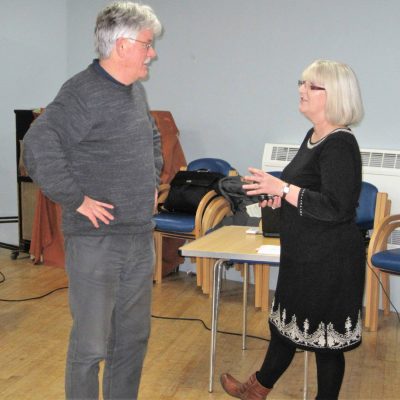
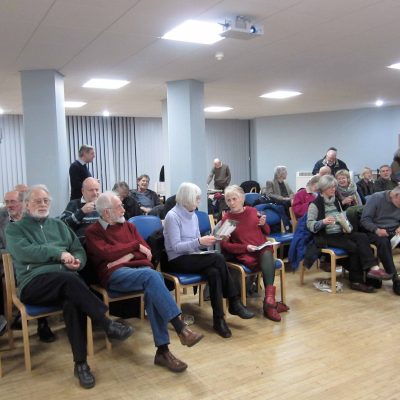
Bob Jones (Chairman) with Dr. Chadburn BAAS members
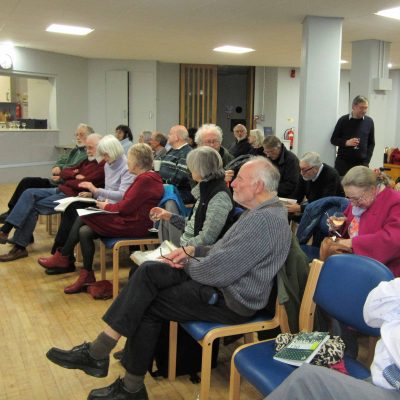
(Stonehenge Visitor Centre image copyright English Heritage)
